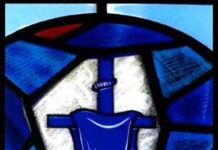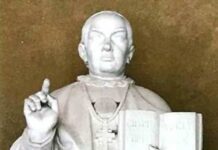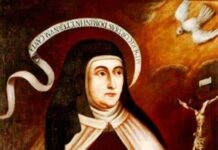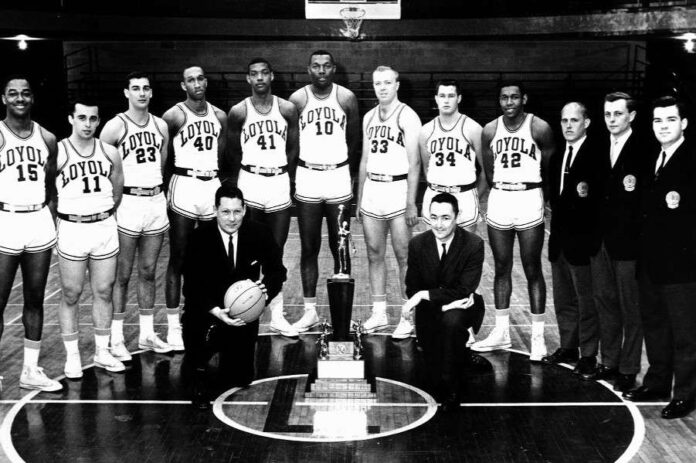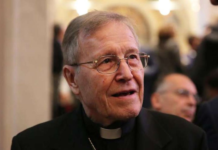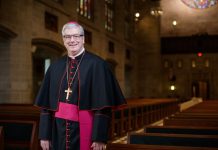Washington D.C., Mar 30, 2021 / 10:15 am MT (CNA).- In the history of Catholic college basketball and race, there are both “heroes” and “villains,” said one author of a new book on Catholic college basketball programs.
“There are Catholic heroes and Catholic villains in that story,” said John Gasaway, author of the book “Miracles on the Hardwood,” in an interview with CNA last week. Gasaway is also a college basketball analyst for ESPN.com, and his book focuses on the history of Catholic college basketball programs and their continued success.
Some Catholic college basketball programs were ahead of their time in accepting Black players in the 1950s and 1960s – enough to receive commendation from the African-American press, he noted.
“It wasn’t always a perfect history, but they [Catholic schools] did make the right decisions enough times to earn that reputation, and there are indeed some good stories to tell,” he said.
Gasaway spoke with CNA during the 2021 NCAA Division I men’s basketball tournament. Four of the teams that advanced to the tournament’s round of 16 were Catholic schools, although as of Tuesday morning only one Catholic program – Gonzaga University – had advanced to the “Elite Eight” round.
College basketball in the 20th century mirrored the overall transformation of America, especially in race relations – and at Catholic schools this was, in many ways, no different, he said.
The University of San Francisco, which is affiliated with the Jesuits, dominated basketball in the 1950s. The “Dons” were led by Black future hall-of-famers Bill Russell and K.C. Jones. Among college basketball programs, San Francisco was relatively “early” in integrating their lineup – although some Black athletes had already been playing at secular programs since the end of the 1930s, Gasaway explained in his book.
Nevertheless, schools like San Francisco and Duquesne, another Catholic university in Pittsburgh, were lauded by African-American publications for integrating their lineups, Gasaway noted.
Several years later, the Jesuit-affiliated Loyola University Chicago featured four Black starters on its 1963 championship team. Their road to the title included what has been billed as the “Game of Change,” a matchup with all-white southern powerhouse Mississippi State University.
Loyola’s opponent had to decline tournament participation three times in the previous four years because of a regional custom of refusing to play teams with Black players. The players, coach, and university president all wanted to play in the 1963 tournament, but state officials secured an injunction on the team leaving the state. The players and coaches sneaked out of the state and arrived at the tournament for their desired matchup with Loyola, who triumphed in the contest.
“It was a big deal, it led to a photo, and it encapsulated this image that Catholic programs were leading the way on this front. And again, they often did,” Gasaway said of Loyola University and race relations.
However, “that wasn’t true everywhere,” he added. “Mostly we focus on the good stories, but there were some laggards, even in the Catholic camp,” he said of programs integrating Black players.
The Jesuit schools Boston College and Georgetown University didn’t include a single Black basketball player until the mid-to-late sixties, “which is really late in the game, relatively speaking,” Gasaway said.
Georgetown’s delay in integrating its lineup “is highly-ironic to our eyes today, given its subsequent history on this front,” Gasaway noted.
One man would be responsible for changing the program’s trajectory.
Before he was a hall of fame coach at Georgetown University, John Thompson, a Black Catholic, was a successful college player and then coach at St. Anthony High School in Washington, D.C. When he interviewed to become Georgetown’s basketball coach in 1972, a skeptical Thompson asked the search committee why they would hire a Black coach – knowing they had no interest in him as a Black player in 1960.
Thompson was hired, and twelve years later, he hoisted an NCAA championship trophy during an impressive run of three title game appearances in four years. He guided the program to 24 straight postseason appearances and was known for recruiting Black players – so much so that young viewers of games in the 1980s thought the school was a historically-black university.
“If Thompson could hear that, he would laugh long and hard, because he himself – being from the District – he referred to Georgetown as ‘that white school up on the hill’,” Gasaway noted.
“So the transformation he wrought was wondrous, it was dramatic. And he’s quite a figure in the game.”
Subscribe to our daily CNA newsletter
At Catholic News Agency, our team is committed to reporting the truth with courage, integrity, and fidelity to our faith. We provide news about the Church and the world, as seen through the teachings of the Catholic Church. When you subscribe to the CNA UPDATE, we’ll send you a daily email with links to the news you need and, occasionally, breaking news.
As part of this free service you may receive occasional offers from us at EWTN News and EWTN. We won’t rent or sell your information, and you can unsubscribe at any time.




